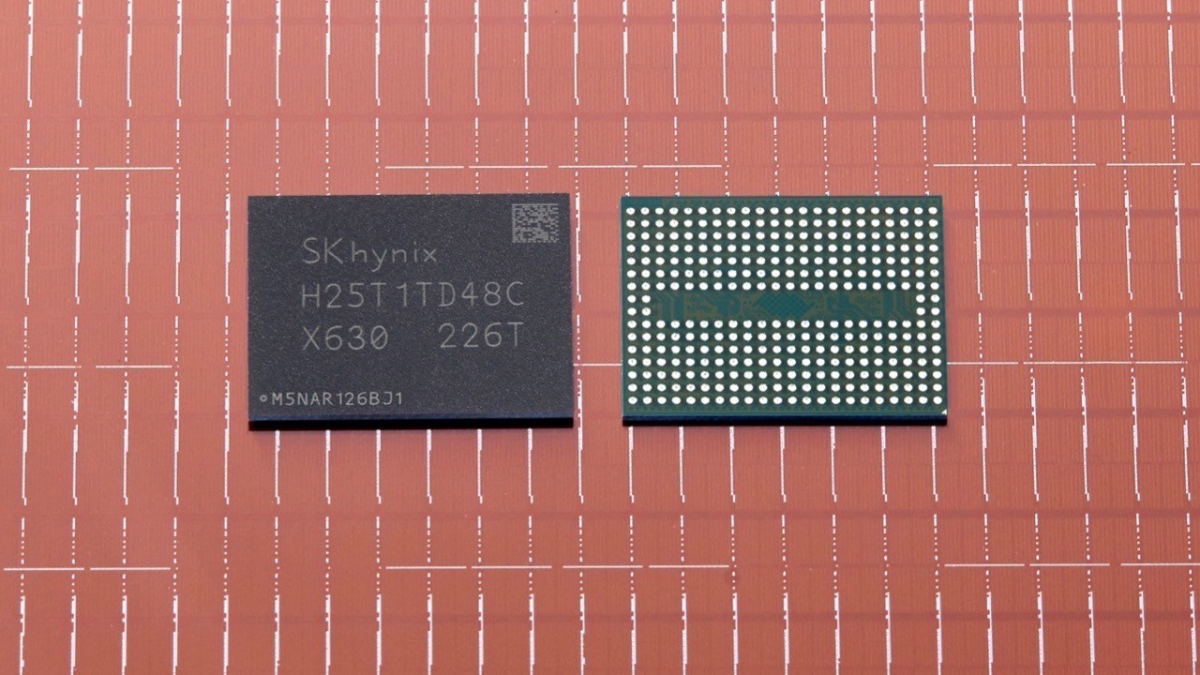SK Hynix has introduced its first 3D NAND device featuring 238 layers, the highest number of layers in the industry. The new 512Gb devices promise to be rather cheap and will enable SK Hynix to build inexpensive solid-state storage. Also, 512Gb 238-layer 3D NAND products will help the memory maker learn how to mass produce flash memory with a high number of layers.
SK Hynix’s first 3D NAND device with 238 layers features a triple level cell (TLC) architecture, a capacity of 512Gb (64GB) as well as a 2400 MT/s interface speed, a 50% increase compared to previous-generation flagship NAND from the South Korean manufacturer. As an added bonus, the new 3D NAND memory device reduces power consumption during reads by 21%, which will be an advantage for mobile PCs as well as smartphones.
The IC features a charge trap flash (CTF) design as well as SK Hynix’s peripheral under cells (PUC) layout that the company formally calls ‘4D’ NAND. The company’s peripheral under cells (PUC) allows to reduce costs of NAND memory by making devices slightly smaller.
Formally, SK Hynix’s 238-layer 3D NAND devices are more technologically advanced than Micron’s 232-layer 3D NAND ICs introduced in July. Micron’s 232-layer 3D NAND devices feature a 1Gb capacity and therefore provide more storage space per chip and enabling to build 3D NAND packages of up to 2TB. Yet, SK Hynix says that its 1Gb 238-layer 3D NAND products will be introduced already next year.
In fact, 512Gb 238-layer 3D NAND devices may have certain advantages over 1Gb 232-layer 3D NAND ICs when it comes to building fast midrange SSDs (that have all chances to enter our best SSDs list). Eight 512Gb 3D NAND devices allow to build 512GB drives will all eight NAND channels active and therefore provide maximum parallelism and performance possible at a relatively low cost.
SK Hynix plans to start mass production of 238-layer 3D TLC NAND devices (or 4D NAND, if you prefer) in the first half of 2023. The new flash memory ICs will be initially used for client SSDs, later on it will be adopted for smartphones as well as for datacenter-grade drives.
